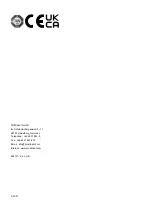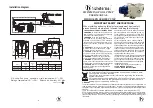
1.
Close the stopcocks upstream and downstream of the in-line
probe housing
2.
Unscrew the filter bowl
3.
Remove the filter insert and clean it without detergent
4.
Insert the filter insert into the housing
5.
Check the sealing ring and the sealing surfaces for cleanli‐
ness, and clean if necessary
6.
Screw the filter bowl until liquid-tight
7.
Open the stopcocks on the in-line probe housing
Only allow authorised Service personnel to perform mainte‐
nance on the system.
9.1 Replacing the chemical storage tanks
WARNING!
Danger from hazardous substances!
Possible consequence: Fatal or very serious inju‐
ries.
Please ensure when handling hazardous sub‐
stances that you have read the latest safety data
sheets provided by the manufacture of the haz‐
ardous substance. The actions required are
described in the safety data sheet. Check the
safety data sheet regularly and replace, if neces‐
sary, as the hazard potential of a substance can be
re-evaluated at any time based on new findings.
The system operator is responsible for ensuring
that these safety data sheets are available and that
they are kept up to date, as well as for producing
an associated hazard assessment for the worksta‐
tions affected.
Labelling the chemical storage tanks
Label the connections on the unit, the metering
accessories and the chemical storage tanks in
such a way that it is impossible to mix up the
storage tanks. It is the responsibility of the system
operator to attach and maintain the labels. We can
provide labels.
1.
Ensure unrestricted access to the chemical storage tanks to
be replaced so that you can work safely and keep escape
routes free
2.
Wear protective equipment as outlined in the material safety
data sheets for the chemicals used
3.
First replace one chemical storage tank and complete this
task first
4.
Handle and remove any spilt feed chemical as per the mate‐
rial safety data sheet
Maintenance interval: 6 months
Clean dirt filter regularly:
Maintenance interval: 12 months
Service
Maintenance Work
54















































